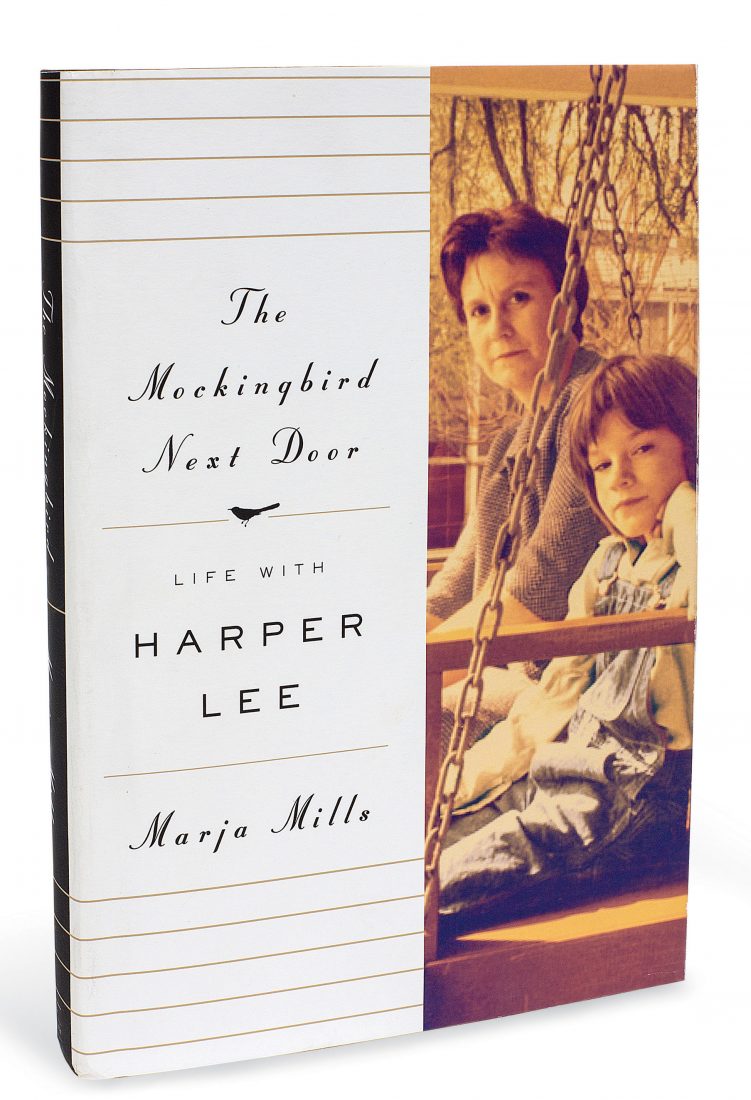July 1960—The novel To Kill A Mockingbird is published and will go on to win the Pulitzer Prize and stay on best-seller lists for nearly two years. Harper Lee, the book’s author, will not follow up with another novel and will soon become a fierce protector of her privacy. The price she pays will be unchallenged speculation about her life.
More than a half century later, this summer, The Mockingbird Next Door: Life with Harper Lee, by Marja Mills, will bring us the personality, daily habits, friends, community, and family of Nelle Harper Lee (“Nelle” is preferred at home).
In 2001, Mills, then a journalist from Chicago, became friends with Harper Lee and her sister Alice in their hometown of Monroeville, Alabama. A few years later, in 2004, Mills moved in next door to the sisters (thus the book’s title).
A skilled writer and storyteller, Mills must also possess gentle, yet significant, capabilities for friendship. The Lee sisters took her in and opened up to her because they were happy to spend time with her; they also realized an opportunity to refute some of that unchallenged speculation that surfaced and resurfaced in past decades. Clearly, the sisters wouldn’t have talked so much to someone they didn’t trust and like.
In these pages you will not find the rush of dates and facts of traditional biography form. Instead, you will find a rendering of conversations—and extraordinary detail:
First, immediately on the left, was a small bathroom with pink tiles. A pair of women’s stockings hung to dry. Above the sink, a dental appointment reminder was tucked into the side of the mirror.
Mills found herself living a journalist’s dream: drinking coffee at McDonald’s alone with Harper Lee; joining the sisters while they fed ducks; eating supper with them and neighboring friends. All along, we witness the telling, telling, telling of stories: stories about A. C. Lee, Nelle’s lawyer-father, the inspiration for her famous fictional character Atticus Finch; stories about their hometown and its characters. We witness the sisters’ love of history, language, books. We learn of family tragedies and hear about Nelle’s estrangement from Truman Capote; we get a feel for Nelle’s need for privacy, her directness and occasional anger.
From a personal angle (and this will ring true for many readers with older Southern relatives), this book helped me remember my mother and her sisters, their companionship and nurturing of each other, their play with language, their spats, their soft satire about a neighbor’s habits, their frugal stoicism (a Monroeville neighbor—as my mother did—refreezes used ice).
It might even be an advantage that Mills was down from Chicago, peeking into a Southern community with an open mind, passing to the reader perspectives less likely to come from a Southerner. Plus, she grew up Unitarian—here observing Methodists. Mercy me.
Mills writes about the continued presence of the bigotry found at the core of To Kill a Mockingbird. In response to observing a friendly restaurant exchange between Harper Lee and a boy from India, she says:
I couldn’t help but envision a novel she could have written that included immigrants like those at the neighboring table, with Nelle’s eye for detail and character, her empathy for outsiders, applied to the subculture of East Asians living in southern Alabama.
Naturally, William Faulkner and Eudora Welty are chief among Nelle’s favorite writers. But it may surprise you to read what she thinks of Flannery O’Connor and what (if you don’t already know) O’Connor had to say about Nelle’s novel. You’ll have to go to the book for that one. I ain’t talking.
The Mockingbird Next Door has a near perfect combination of story and fact—and it’s clear and fair, in spite of a few sentences that Harper Lee might like deleted from the final draft. But after all, it will be the art, To Kill a Mockingbird, not the artist, that lasts forever and gives enduring pleasure.









